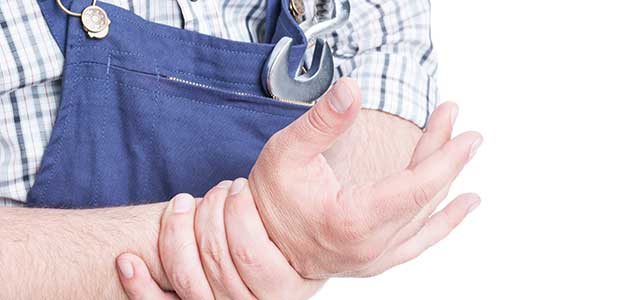
CDC Report Identifies Jobs at High Risk for Carpal Tunnel
A new report from the Centers for Disease Control and Prevention aims to assess trends in carpal tunnel syndrome (CTS) cases and identify industries and occupations with high risk of CTS.
A new report released Oct. 4 by the Centers for Disease Control and Prevention aims to assess trends in carpal tunnel syndrome (CTS) cases and identify industries and occupations with high risk of CTS.
In the report, "Rates of Carpal Tunnel Syndrome in a State Workers' Compensation Information System, by Industry and Occupation — California, 2007–2014," the California Department of Public Health analyzed California workers' compensation claims for CTS by industry (2007-2014) and occupation (2014) and calculated rates per full-time equivalent (FTE) worker.
Carpal tunnel syndrome happens when the median nerve is compressed as it passes through the wrist within the carpal tunnel, which causes pain, tingling, weakness, or numbness in the hand or wrist. Workplace-related risks for CTS include work activities requiring forceful, repetitive tasks, vibration, or prolonged use of the wrists or hands in an awkward posture, according to CDC.
The CDPH data analysis identified a total of 139,336 probable and possible CTS cases in California workers during the 2007-2014 period. The rate of CTS among women (8.2 cases per 10,000 FTE) was found to be 3.3 times higher than the rate of CTS among men (2.5).
Industries with high rates of CTS included work that involved manufacturing apparel, processing food, and performing administrative work. Based on the data analyzed, the report states that the industries with the highest CTS rates were textile, fabric finishing, and coating mills (44.9); apparel accessories and other apparel manufacturing (43.1); and animal slaughtering and processing (39.8).
The report concludes that high-risk industries should consider implementing preventative and interceptive methods, such as ergonomic evaluations and development of instruments and tools that correct awkward hand and wrist posture and require less repetition and force.